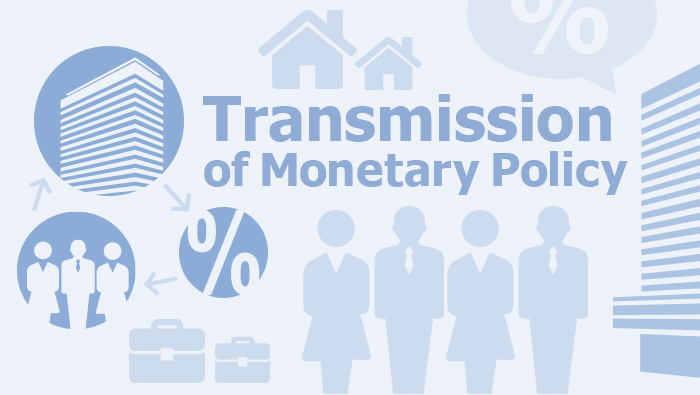March 2023
- Download the complete Bulletin 8.4MB

Renters, Rent Inflation and Renter Stress
Around one-third of all Australian households rent. Renter households tend to be younger, have lower incomes and less wealth than owner-occupiers. Renter households are also more likely than mortgagors to experience financial stress, although the incidence of financial stress among renter households has declined over the past decade. The rental market is tight and rents have increased more strongly of late, compared with the modest increases in average rents over the 2010s. For some renters, strong growth in incomes will have helped limit the deterioration in housing affordability, although there will be others who will struggle to afford the rent increases. This suggests that affordability will have worsened for some renters, and, in combination with other rising cost-of-living pressures, this is likely to be contributing to financial stress.

Fixed-rate Housing Loans: Monetary Policy Transmission and Financial Stability Risks
Fixed-rate borrowing increased significantly during the COVID-19 pandemic, which has delayed the effect of the higher cash rate on borrowers’ cash flows. A key issue for the economic outlook, and by implication financial stability, relates to the ability of borrowers with fixed-rate loans to adjust to substantially higher borrowing costs when their fixed-rate mortgages expire. Borrowers with fixed-rate loans have had a considerable period to adjust their finances to prepare for the increase in their mortgage payments and many appear to have similar savings to borrowers on variable rates. However, on some metrics fixed-rate loans have higher risk characteristics than variable-rate loans. With many fixed-rate mortgages expiring in the period ahead, the Reserve Bank will continue to closely monitor the implications for household consumption and financial stability.

A New Measure of Average Household Size
This article introduces a new, timely measure of average household size (AHS) – a key determinant of underlying demand for housing – using the data from the ABS monthly Labour Force Survey. The average number of people living in each household has declined from around 2.9 in the mid-1980s to around 2.5 since the early 2000s. More recently, the AHS declined to historical lows of a little below 2.5 people per household. This was driven by changes in Sydney and Melbourne during the pandemic, which were more exposed to health restrictions, lockdowns and changes in migration flows from overseas.

Non-bank Lending in Australia and the Implications for Financial Stability
Non-bank lenders help to finance some forms of economic activity that might otherwise go unfinanced by traditional banks. However, as the global financial crisis demonstrated, non-bank lending activities have the potential to undermine financial stability, in part because they are less constrained by regulation. Risks to financial stability can include the amplification of credit and asset price cycles, increased competition for borrowers that prompts banks to weaken their own lending standards, and the potential of stress spilling over into the prudentially regulated financial system. Unlike in some other economies, non-bank lending accounts for a small share of total credit in the Australian economy and banks have relatively limited exposure to non-bank lenders. Non-bank lending therefore poses little systemic risk to financial stability in Australia at present. However, it has grown strongly in recent years, particularly for housing. Regulators and policymakers therefore need to continue monitoring developments in this space. This article provides a primer on non-bank lending in Australia, focusing on lending for housing and the potential risks to financial stability.

The Cash-use Cycle in Australia
The use of cash for day-to-day transactions has been declining for many years and this has implications for all aspects of the cash system. This article illustrates the interrelationships between consumers’ use of cash for transactions, access to cash services and merchants’ acceptance of cash as a payment mechanism through a ‘cash-use cycle’. Recent data suggest that the cash-use cycle in Australia is functioning adequately at present. However, the ongoing adequacy of cash access is vulnerable to further withdrawal of access points; this issue warrants regular monitoring.

Can Wage-setting Mechanisms Affect Labour Market Reallocation and Productivity?
Productivity growth has slowed in Australia and overseas in recent decades, with negative implications for wages and incomes. In Australia, at least part of this slowdown reflects the fact that more productive firms have grown and attracted workers more slowly than in the past. This article considers whether the increased use of industry-wide wage agreements could help to explain this slowdown. It finds that in sectors with greater use of industry-wide agreements, the relationship between firm-level wages and productivity tends to be weaker. This weaker relationship between productivity and wages seems to feed through to firm growth, with more productive firms seemingly less likely to attract staff and grow. While many factors can affect the choice of wage-setting mechanism, these results suggest that aggregate productivity growth and living standards could be stronger when firms are incentivised and able to compete for workers.

Bank Fees in Australia
This article updates previous Reserve Bank research on bank fees charged to Australian households, businesses and government. Over the year to June 2022, total fees charged by banks through their domestic operations were little changed from the previous reporting period. Strong growth in business credit added to fee income in the year, while overall fee income from households declined amid heightened lending competition in the housing market. Lending growth continued to outpace growth in fee earnings, and total fee income as a share of banks’ incomes decreased slightly.

Developments in Banks' Funding Costs and Lending Rates
Banks’ funding costs rose over 2022, driven by increases in the cash rate and in expectations for the future path of the cash rate. In turn, lending rates have increased considerably for the first time in over a decade. The increases in the average rate charged on all outstanding loans was limited by the large share of fixed-rate housing loans and ongoing competition in housing lending. This article updates previous research published by the Reserve Bank on developments in banks’ funding costs and lending rates.

Developments in Foreign Exchange and Over-the-counter Derivatives Markets
This article discusses the key results from the 2022 Triennial Central Bank Survey of Foreign Exchange and Over-the-counter Derivatives Markets. Global activity in foreign exchange (FX) markets increased over the three years to April 2022, driven by increased turnover of FX swaps with short maturities and trading between dealers. The volume of FX trading activity in the Australian market also grew, although this was largely driven by increased trading between related parties. The Australian dollar was the sixth most traded currency globally, down from fifth in 2019. Turnover of over-the-counter (OTC) interest rate derivatives declined globally, reflecting the transition away from the London interbank offered rate (Libor); however, activity increased in the Australian OTC interest rate derivative market, reflecting an increase in turnover of interest rate swaps. For Australian banks, the value of OTC derivatives increased sharply, driven by interest rate and commodity derivatives.

Foreign Currency Exposure and Hedging in Australia
The 2022 Survey of Foreign Currency Exposure confirms that Australian entities’ financial positions, in aggregate, are well protected against a depreciation of the Australian dollar. The composition of Australia’s foreign currency denominated assets and liabilities means that, overall, Australian entities have a net foreign currency asset position. This has increased over a number of years, largely reflecting an increase in the value of foreign currency equity assets associated with superannuation funds. Meanwhile, the banking sector accounts for a large share of Australia’s foreign currency liabilities because of their offshore funding activities. However, the bulk of the banking sector’s foreign currency debt liabilities have been hedged. After hedging, the sector has a net foreign currency asset position and no significant currency mismatches, both of which reduce the risks associated with a large depreciation of the Australian dollar.

Reassessing the Costs and Benefits of Centrally Clearing the Australian Bond Market
This article considers the costs and benefits of centrally clearing the Australian bond market, in light of developments in the market since the Reserve Bank’s last review in 2015. On balance, our analysis suggests that changes to the size and structure of the Australian bond market have strengthened the case for central clearing. These changes include substantial growth in the size of the market, increased participation of non-resident investors and increased complexity resulting from the growing number of bilateral clearing arrangements. Central clearing would simplify the market structure and could yield other benefits, especially in times of stress. For example, our estimates suggest multilateral netting has the potential to lower settlement obligations by $60 billion per day. This is more than can be achieved with bilateral netting. Further, market resilience and liquidity conditions might also be improved by multilateral netting as interbank participants’ balance sheet constraints are reduced. The key challenge for a potential central counterparty would be to develop a sufficiently wide network of products and participants to achieve overall benefits. Some participants face a lower incentive to join and in their absence the potential benefits from central clearing would be reduced.
The graphs in the Bulletin were generated using Mathematica.
ISSN 1837-7211 (Online)
